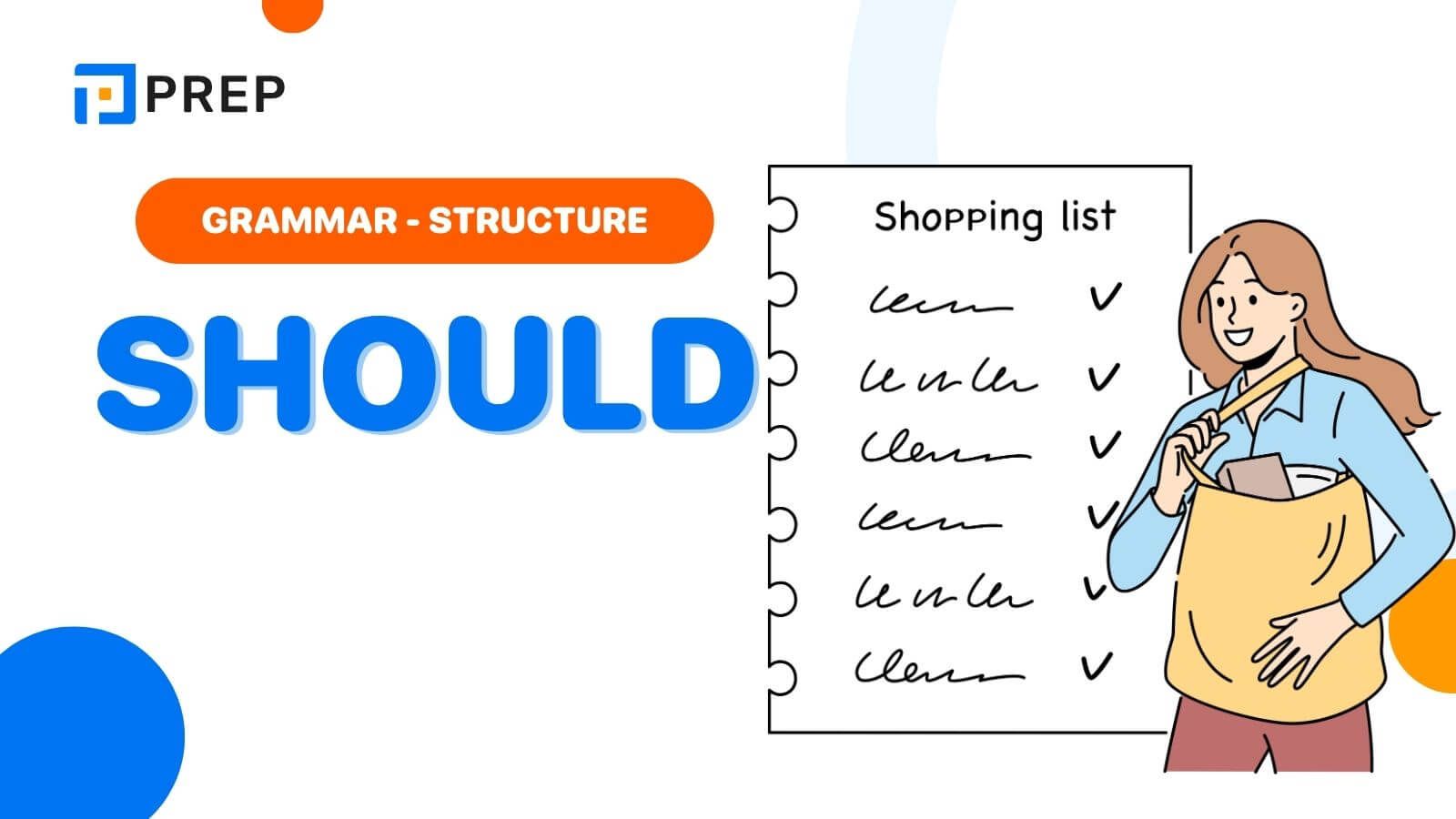What is Should? English Knowledge About Should
This comprehensive article provides an authoritative guide to mastering the English modal verb "should," covering its grammatical structures, communicative functions, and practical applications across various contexts. The content systematically explores "should" as a fundamental modal auxiliary verb that serves three primary functions: expressing advice and recommendations, indicating mild obligation or responsibility, and conveying expectations about future events or logical deductions.

I. What is Should?
"Should" stands as one of English's most fundamental modal auxiliary verbs, serving as an indispensable tool for expressing advice, obligation, and expectation in daily communication. As a modal verb, "should" follows specific grammatical rules that distinguish it from regular verbs: it never takes an "-s" in third person singular forms, always pairs with the base form of main verbs, and forms negatives and questions independently without auxiliary verbs.
For example:
-
Shouldn’t Hanna get home early?
-
Martin should be working at the company right now.
II. The structures of Should in English
Let’s explore how to use Should with PREP below!
1. General Structure of Should
The affirmative structure with "should" follows the simple pattern of subject + should + base verb, creating clear and direct statements about recommendations or expectations
Structure:
S + should (not) + V
This Should structure is commonly used in the following situations:
-
To give advice or make recommendations: Hanna should not run because the floor is slippery.
-
To talk about obligation, but with a weaker connotation than “must”: Jessica should submit the report by 8 a.m.
-
To talk about probability and expectation: Martin should be here by midnight.
-
To express a conditional form in an inverted condition in the first conditional: Should Hanna get the prize, she’ll treat John to a meal.
2. Should have
The structure Should have, followed by a past participle, is used to talk about something that should have happened in the past but did not. When "not" is added after "should," this structure expresses something that should not have happened but did occur. However, the Should not have structure is often used as a form of politeness rather than criticism.
Structure:
S + should (not) have + PP
For example:
-
Hanna should have told John about the accident.
-
Martin shouldn’t have listened to Anna.
3. Should be V-ing
Structure:
S + should be + V-ing
The Should be structure has two meanings:
-
To express an action that may be happening at the moment of speaking:
-
It’s 9 am, Hanna should be working right now.
-
Anna should be studying for your exams right now.
-
-
To imply that the subject is not fulfilling their obligation or is acting inappropriately:
-
It’s 9 am! Hanna, you should be studying right now!
-
Emi should be working on her project instead of watching TV.
-
Note: Depending on the tone of voice, we can determine whether it’s a prediction or a remark of reproach.
4. Should not…
Should + not (abbreviated as shouldn't) is the negative form of the Should structure. Shouldn't means to advise against doing something.
S+ Should + not + V
For example:
-
You shouldn’t throw your litter onto the street.
-
He shouldn’t play outdoors too long if he doesn’t want to get sunburned.
III. How to Use Should in Communication
After figure out what is should, now let's explore how to use Should in communication with PREP below!
1. Giving Advice and Making Recommendations
When offering guidance to others, "should" provides the perfect balance between helpfulness and respect for personal autonomy, making suggestions without appearing overly demanding or controlling.
Personal Advice Examples:
- Career Development: "You should consider learning a new skill to advance your career"
- Health & Wellness: "You should take some time to relax after this stressful period"
Professional Recommendations:
- Corporate Strategy: "Companies should invest in employee training programs for long-term success"
- Project Management: "Project managers should establish clear communication channels from the beginning of any initiative"
2. Expressing Mild Obligation, Duty, or Responsibility
"Should" excels at conveying moral duties and social responsibilities without the harsh authority of "must" or the external pressure implied by "have to," making it ideal for discussing ethical considerations and community expectations.
Civic Duties:
- Democratic Participation: "Citizens should vote in elections to participate in democratic processes"
- Parental Responsibilities: "Parents should teach their children about honesty and integrity from an early age"
Professional and personal responsibilities find natural expression through "should" because it acknowledges the importance of these duties while recognizing that individuals ultimately choose their own actions.
Workplace Behavior:
- Punctuality: "Employees should arrive on time and prepared for important meetings"
- Academic Responsibility: "Students should complete assignments before the stated deadlines"
Community Relations:
- Friendship: "Friends should support each other during difficult times"
- Neighborhood: "Neighbors should keep their properties maintained for the community's benefit"
3. Indicating Expectation and Probability
Future Event Expectations
Expectations about future events often employ "should" to express reasonable confidence based on available information, past experience, or logical analysis of current circumstances.
- Policy Impact: "The new policies should improve customer satisfaction within the next quarter"
- Investment Returns: "This investment should generate steady returns over the long term"
Logical Deductions
Logical deductions use "should" to express conclusions drawn from evidence, patterns, or reasonable assumptions about cause and effect relationships.
- Shipping Logic: "The package should arrive tomorrow since it was shipped with express delivery"
- Health Recovery: "She should be feeling better now that she's had proper rest and medication"
- Technology Benefits: "The new software should reduce processing errors significantly"
4. Describing Ideal Situations and Formal Contexts
Ideal situations benefit from "should" when describing preferred states or optimal conditions that may not currently exist but represent goals worth pursuing.
Social Vision:
- Educational Access: "Education should be accessible to everyone regardless of economic background"
- Workplace Culture: "Workplace environments should promote creativity and collaboration among team members"
5. To use in conditional sentences
In formal writing, should can be applied in first conditional sentences. Specifically, should will be used in the clause with if (while the clause without if maintains its usual form) in one of the following structures:
|
Structure |
Example |
|
If + S + should + V, S + will + V |
If you should encounter any difficulty when using our product, we will help you. |
|
Should + S + V, S + will + V |
Should you encounter any difficulty when using our product, we will help you. |
IV. Distinguishing Should from Ought To and Would
In English, the structures Should and Ought to, as well as Would, have similar meanings; however, there are some differences in their usage. Let’s explore these differences with PREP!
1. Distinguishing What is Should and Ought to
|
Distinguishing Should from Ought To |
||
|
|
Should |
Ought to |
|
Similarities |
Both the Should and Ought to structures mean "should do" or "need to do." |
|
|
Differences |
The Should structure is used to express one's subjective opinion, meaning “what I think is best.” For example:
Sometimes, we can use Should after Why when searching for an explanation or reason, but Ought To cannot be used in this way. For example:
The Should structure indicates a prediction, whereas Ought To does not. For example:
|
The Ought to structure is used when we want to express an objective truth, meaning “what is necessary and cannot be ignored.” For example:
Ought To carries a stronger meaning, as Should means "should" while Ought To means "must or necessary." For example:
|
2. Distinguishing What is Should and Would
|
Distinguishing Should and Would |
||
|
|
Should |
Would |
|
Similarities |
Both the Should and Would structures can mean "should do." |
|
|
Differences |
The Should structure is used as a more formal substitute for Would with the subjects “I” and “We” in conditional clauses. For example
The Should structure can also be a more formal way to express something less direct. For example:
|
|
V. Some Phrases Accompanying Should in English
In English, in addition to the basic Should structures mentioned above, several phrases accompany what is should to form common idioms as follows:
|
Phrase |
Meaning |
Example |
|
I should hope/say/think so/not |
Used to emphasize the speaker's opinion or expectation about a situation. For example, in response to a question, it asserts a personal belief about what is likely or desirable. |
“Will Martin be there?” – “I should hope not! Martin was so horrible to you.” |
|
They should worry! |
Used to emphasize that someone has no need for concern when addressing another person, often in a sarcastic or reassuring tone. |
Martin should worry! He hasn’t a problem. |
|
You should be so lucky! |
Expresses skepticism or disbelief regarding the likelihood of someone achieving what they desire, often used humorously or ironically. |
“Martin’s going to ask for a salary increase.” – “He should be so lucky!” |
|
You should get out more |
Used to suggest that someone is spending too much time engaged in mundane or uninteresting activities, and should seek more enjoyable or stimulating experiences. |
Hanna arranged all her CDs in alphabetical order. She should get out more! |
VI. Exercises on the Should Structure with Answers
After learning the theory about “what is should” structure, let's apply the rules and usage in the small exercise below!
1. Exercise
Fill in the blanks with either Should or Ought to.
-
Hanna _____ drive more slowly in this raining weather.
-
Peter thinks this city _____ have more parks.
-
“Do you think Jenny _____ invite John to her party?” “Yes, I think she _____.”
-
Harry _____ eat lots of vegetables every day.
-
This TV never works as it _____. Look at the screen, it’s terrible!
-
There _____ be some good movies at the cinema this month.
-
Martin _____ have apologized to Hanna after he was so rude. He’ll call her later to say sorry.
-
Why _____ anyone want to eat something so horrible?
-
Why _____ she not buy it if she can afford it?
-
You _____ be kinder to him. He is just a kid.
2. Answer key
|
|
Mastering "what is should" reveals its remarkable versatility as a linguistic bridge between suggestion and obligation. This essential modal verb equips English speakers with tools for diplomatic advice-giving, respectful obligation expression, and confident expectation communication across all contexts.
Continued practice in authentic situations builds the intuitive understanding that characterizes fluent speakers. Whether offering guidance, expressing expectations, or navigating modal verb distinctions, remembering all the knowledge about "what is should" opens doors to nuanced communication that resonates naturally with native speakers.

Hi I'm Chloe, and I am currently serving as an Product Content Administrator at Prep Education. With over five years of experience in independent online IELTS study and exam preparation, I am confident in my ability to support learners in achieving their highest possible scores.
Comment
Premium content
View allPersonalized roadmap
Most read












